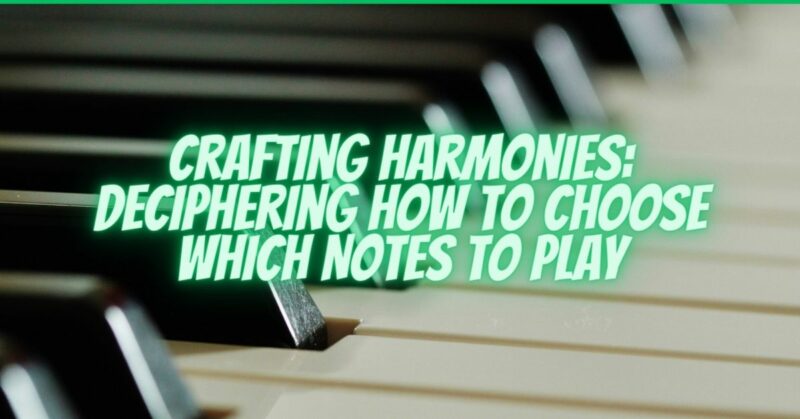In the realm of music, the artistry lies not just in the notes themselves, but in how they are chosen and woven together. As a musician, whether you’re picking up a guitar, sitting at a piano, or strapping on a bass, the question of how to choose which notes to play is fundamental to creating melodies, harmonies, and ultimately, a musical experience that resonates. Let’s delve into the intricacies of note selection and uncover the creative process behind crafting harmonious compositions.
Understanding Musical Context:
At the heart of note selection lies the context of the music you’re creating. The genre, mood, and intention of the piece dictate the emotional palette you’re working with. Are you aiming for an upbeat pop melody, a soulful jazz improvisation, or a contemplative classical piece? Each context guides your choices, informing the notes that will best express your musical intent.
Melody and Chord Progressions:
Melodies are the soulful storytellers of music. They capture emotions, convey themes, and engage listeners on a profound level. When crafting a melody, you need to consider the underlying chord progressions. Choosing notes that harmonize with the chords not only creates a sense of cohesion but also highlights the tension and release that make melodies captivating.
A common approach is to emphasize the chord tones (root, third, fifth) on strong beats while adding passing tones and non-chord tones for color and movement. Experimenting with intervals, sequences, and arpeggios can help you discover intriguing note combinations that add depth to your melody.
Exploring Scales and Modes:
Scales and modes are invaluable tools for note selection. They provide a palette of harmonically related notes that fit the mood and genre you’re working within. Major and minor scales are go-to choices for their versatility, but delving into modes like Dorian, Mixolydian, and Lydian can infuse your compositions with unique flavors.
Start by experimenting with these scales, playing through them, and identifying the tones that resonate with the emotion you’re aiming to convey. This process allows you to select notes that align with the overall musical theme.
Embracing Dissonance and Resolution:
Music thrives on tension and release, and note selection plays a crucial role in this interplay. Dissonance, created by clashing notes, introduces tension that can be resolved by moving to consonant notes. Skillful use of dissonance and resolution can evoke powerful emotions and keep listeners engaged.
When incorporating dissonance, consider the context and duration. Short-lived dissonances can add spice and intrigue, while prolonged dissonances might serve to intensify a climactic moment.
Emotional Expression:
Ultimately, note selection is a means of expressing emotion. The notes you choose should reflect the feelings you wish to convey. Experiment with dynamics, articulations, and phrasing to imbue your chosen notes with life and feeling. Allow yourself to be guided by your intuition and instincts, as they can lead to truly heartfelt compositions.
Practice, Experimentation, and Creativity:
Choosing which notes to play is an art that requires practice and experimentation. As you play and explore, you’ll develop a better understanding of intervals, scales, and harmonies. Trust your creativity and don’t be afraid to break rules; innovation often arises from daring to explore the unconventional.
In Conclusion:
Selecting the right notes is akin to painting a musical canvas. It involves understanding context, harmonizing with chords, exploring scales, embracing tension and resolution, and expressing emotion. By intertwining these elements, you create melodies and harmonies that resonate deeply with both you and your audience. Remember that the joy of music lies in the journey of discovery, and the notes you choose are the brushstrokes that shape your sonic masterpiece.


